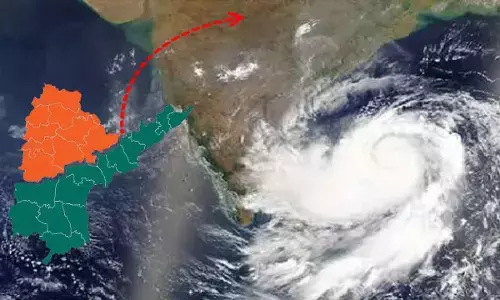Time to admit injustice to farmers

Representative image
Let us not keep trade policy confined to the benefits it brings for the business and industry
Several decades ago, the Commission for Agricultural Costs and Prices (CACP) had in its Price Policy Report for Kharif Crops gave us a peep into how it determined the cotton prices for farmers. If I remember correctly, the report had very clearly mentioned that prices for cotton farmers were kept 20 per cent low so as to ensure the viability of the textile industry. In other words, cotton farmers were subsidising the textile industry, a fact that has never been acknowledged.
Subsequently, when the issue of cotton subsidies warmed up before the World Trade Organisation (WTO), it became known how flagrantly the United States was subsidising its cotton farmers (and also the textile industry). In a joint letter published in New York Times in 2003, heads of four African countries – Benin, Burkina Faso, Chad and Mali – had written: "Your subsidies kill our farmers" kicking off an international uproar. Studies showed that the US had spent $14.8 billion just in four years – between 1998 and 2002 – to subsidise cotton crop cultivation for its 25,000 cotton growers (that existed at that time), which was then valued at $ 21.6 billion. In addition, it provided a subsidy of $1.7 billion every year to the textile industry to buy the subsidised cotton from farmers.
This was in 2003. But despite the massive uproar, so much so that a couple of WTO Ministerial conferences ended without making any headway, US cotton subsidies have only increased. According to the Indian Institute of Foreign Trade (IIFT), the US now provides a massive subsidy of $ 1,17,494 to each of its 8,100 cotton growers compared to $27 being given in India.
These subsidies distort the global markets, and any further reduction in import tariffs, as many mainline economists in India have been lobbying for, only brings in a flood of highly subsidies imports thereby pushing small farmers out. This is important to understand given the renewed pressure on India (by its own breed of mainline economists) to join the Regional Comprehensive Economic Partnership (RCEP) treaty.
Despite being an original founder member to the very idea, India had opted to stay out of the RCEP treaty when it was signed on November 15, 2020. Nevertheless, given the degree of disappointment with several Free Trade Agreements (FTAs) that India had signed and which didn't result in any economic gain, I think India did a remarkable job by staying out of RCEP.
When mainline economists argue in favour of comparative advantage, and refuse to look beyond, they do not realise that the advantage they often cite is backed by huge subsidies which in many cases literally leads to dumping, and also government policies that aim at building economy of scale and thereby keeping transaction costs low. The theoretical assumptions they lock horns with is devoid of any statistical methodology to evaluate or measure the implications that cheaper imports have on the livelihood security of the millions.
Remember, when some years ago, Punjab dairy farmers had protested against the import of cheaper milk from Denmark, which came with subsidies that made the landing price cheaper than India's cost of production. The comparative price advantage was based on heavy subsidies that Danish farmers as well as the processing units get. If the imports had continued, imagine the social, economic and political fallout in a progressive state, which already sees younger students migrating to Canada and Australia for lack of adequate employment opportunities back home.
When I look at the debate on the trade policy India needs, it is disheartening to find most economists only talking about how to make supply chains more competitive thereby meaning the need for investing in more infrastructure, developing skills, encouraging more production-linked subsidies, and ease of doing business, besides of course reducing the import tariffs. Some even go to the extent of asking for bringing import tariffs to zero on 90 per cent of our tariff lines.
Whether we like it or not, this is what the industry needs, and it is not therefore surprising to find mainline economists standing up for them. Just to illustrate, at a time when trickle down has failed, with even the US President Joe Biden publicly acknowledging its failure, economists still continue promoting the same thinking that has led to widening of wealth inequality.
Growth in entrepreneurial culture could be a key to India's success, we are often told. But why is that when we talk of unleashing the entrepreneurial appetite of a young India, we only talking of ease of doing business as the way forward and forget that the young in villages too are seeking opportunities for aspiring entrepreneurs. They too are willing to innovate, improve their skills and revolutionise agriculture both in scale and efficiency. But if you look at the debate on trade policy, the low price cotton farmers are getting in order to keep the textile industry viable has never been part of any discussion. What kind of entrepreneurial skills are we developing when we deliberately keep farm prices low?
The biggest obstacle to feeding entrepreneurial appetite of rural India is to deny farmers their rightful income, and to force them to take to gheraos and blocking highways and railheads to seek release of the payment which is due to them.
The competitive edge that economists think the global supply chains have is actually built on exploiting farmers. Not realising that farmers too have dreams; and as income rises, given the risk-taking attitude that is inherent in them, they have the ability to turn the tables. But if after cultivating a crop like sugarcane, which takes a year to mature, many of them are made to protest for several months or almost for another year to get their due payment released from the mills, it certainly kills the aspiration they carry to take wings.
I agree that Ease of Doing Business not only helped create an enabling environment for the industry but also removed the unnecessary hitches and bottlenecks that came in the way. As many as 7,000 steps – both small and big – were taken to make it easy for the businesses to operate. To begin with, I wonder why can't India, instead of waiting for the World Bank to propose, formulate its own Ease of Doing Farming index and begin its implementation in the right earnest. This would mean setting up an elaborate and efficient system that addresses the problems that farmers encounter at every step. It would also mean that farmer don't have to sit on street protests every now and then.
Let us not keep trade policy confined to the benefits it brings for the business and industry. The trade policy India needs to resurrect should move beyond the usual rhetoric, and see how the benefits percolate to the last man in the street. It needs a fresh vision, and a thinking that is pro-people and pro-environment.
(The author is a noted food
policy analyst and an expert
on issues related to the agriculture sector. He writes on food,
agriculture and hunger)
















